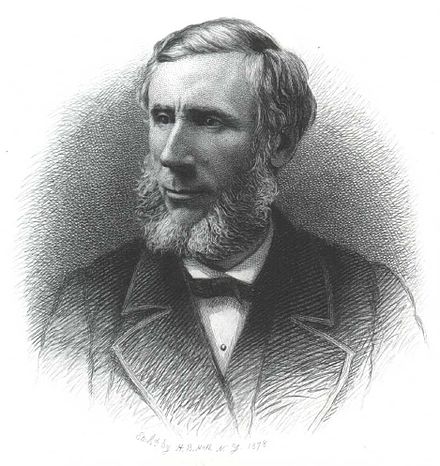
John Tyndall FRS (2 August 1820 - 4 December 1893) was a prominent 19th century physicist. His initial scientific fame arose in the 1850s from his study of diamagnetism. Later he studied thermal radiation, and produced a number of discoveries about processes in the atmosphere. Tyndall published seventeen books, which brought state-of-the-art 19th century experimental physics to a wider audience. From 1853 to 1887 he was professor of physics at the Royal Institution of Great Britain, where he became the successor to positions held by Michael Faraday. [wikipedia]
Quote without a source:
"Vibrate string allowing nodes to oscillate will cause additive synthesis of vibrations in string to increase beyond initial input." [See over-unity]
Keely
Mr. Keely has chosen the successor of Professor Tyndall, at the Royal Institution of Great Britain, as the only one to whom he is willing to communicate his method. This will be welcome news indeed to scientists on both sides of the Atlantic, and the result will be awaited with anxiety alike by both the friends and foes of Keely. We shall watch for the result, as will our American confres. Wm. Norman Brown. [The Connecting Link Between Mind and Matter - Keelys Progress - Part 2]
Ramsay
After vibrations the next thing is musical notes, the sounds produced by the vibrations falling into the ear. Sounds arise in association. There are no bare simple sounds in music; it is a thing full of the play of sympathy. Such a thing as a simple solitary sound would be felt as a strange thing in our ears, accustomed as we are to hear affiliated sounds only. These affiliated sounds, called "harmonics," or "partials" as they have also been called, because they are the parts of which the sound is made up, are like perspective in vision. In perspective the objects lying in the line of sight, seem smaller and smaller, and more dim and indefinite as they stretch away into the distance; while nearer objects and those in the foreground are apparently larger, and are more clearly seen. This is the way of a musical sound; one of its component elements, the fundamental partial, being, as it were, in the foreground to the ear, is large and pronounced; while the other elements are less distinctly heard, and are fainter and fainter as they recede into the musical distance in the perspective of the ear. Few have any idea of the number of these weaker partials of a musical sound. Tyndal's illustrations in his very instructive work on Sound show a string spontaneously divided into twenty segments, all vibrating separately, being divided by still nodes along its length; and a vibrating string will keep thus [Scientific Basis and Build of Music, page 58]
See Also
biogenesis
Light
Power of Beat Harmonics
Sound
Tyndall Effect
